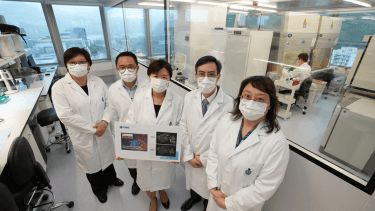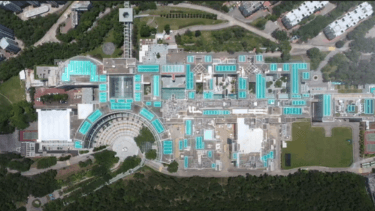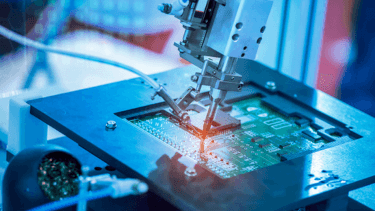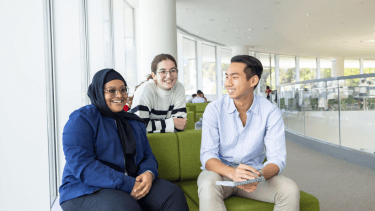The vision of having self-learning computers to perform tasks they are better at than humans is increasingly a reality. At HKUST, we support and facilitate robotics-related research, development, and education. With a focus on autonomous systems and robotics research, it integrates innovations in sensors, devices, systems, networks, neurosciences, data analytics and machine learning into a wide range of applications that aim to create societal impact. It also nurtures a network of industry partners, designs entrepreneurship programs, and drives knowledge dissemination.
Drone from student dorm flies high to global stardom
A globally well-known robotics product, the DJI drone, has its roots at HKUST.
The company that holds more than 70% of the civilian drone market share worldwide was founded humbly out of the then electronic engineering student Frank WANG’s HKUST dorm room, and personally incubated by his teacher Prof. Zexiang LI. In 2006, Frank completed his final thesis at HKUST, which included the development of a flight control system for unmanned platforms. The research later resulted in unmanned aerial vehicles (UAVs), more commonly known as drones, that can handle complex terrains via pioneering motion control and robotic perception technologies.
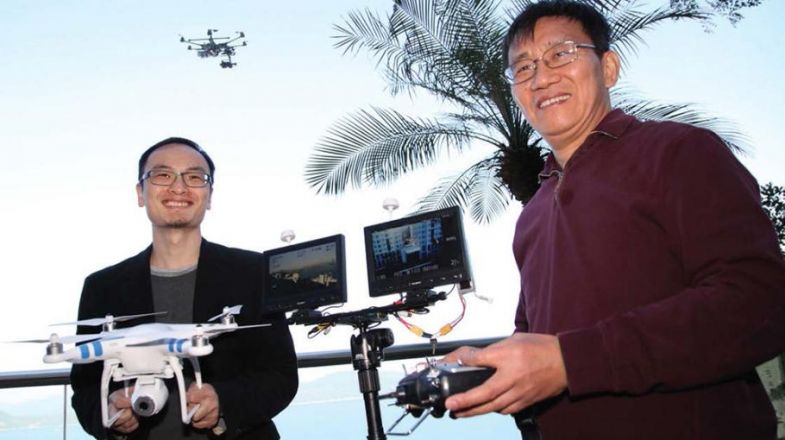
HKUST graduate Frank WANG (left), with his teacher Prof. LI Zexiang, founded DJI, the world’s largest consumer drone company.
The professor’s vision for innovation and knowledge transfer, coupled with the student’s lifelong passion for flying devices, were central to the rise of DJI to global success. The drones invented by them are now popularly used worldwide for commercial, recreational, agricultural and a wide range of other civilian purposes including rescue missions in natural disasters such as earthquakes.
Today, DJI’s global operations span the Americas, Europe and Asia, and its revolutionary products and solutions have been patronized by customers in over 100 countries. Passing the torch on to the next generations of innovators, DJI and HKUST established a joint lab in 2017 to further advance the world’s UAV technology, allowing HKUST graduate students to pursue robotics research.
Saving lives with the power of AI
Our inventions in automation flourish not just in the air, but also on the ground. AutoSafe, a young start-up founded by Prof. Jack CHENG of the Department of Civil and Environmental Engineering and his postgraduate students, has the vision to offer artificial intelligence (AI) solutions to better prevent accidents on construction sites.
Traditionally, the construction industry often relied on the human eyes of safety officers and engineers to inspect safety measures. This approach has proven far from effective or reliable. In Hong Kong, for example, around 30% to 40% of workplace fatalities result from construction accidents, making it the largest cause of work-related death. To avert such tragedies, the company has developed an AI-powered vison-based monitoring system that can track each worker’s movements and behavior on the construction site.
While existing monitoring technology can do simple tasks such as counting workers, machines and equipment, and Personal Protective Equipment (PPE) detection, the company achieved a breakthrough by introducing a dynamic danger zone alert mechanism, a multi-camera worker movement tracking feature, and their integration with the digital works supervision system (DWSS) and common data environment (CDE). They are also building up a one-stop safety platform, aligning with the Smart Site Safety System (SSSS) mandated by the Government earlier this year. The real-time monitoring system allows immediate triggering of alerts, such as triggering an alarm on-site, and firing out instant messages and email alerts, all at the moment when a potential safety hazard is observed and identified. The innovation has been acclaimed with a gold medal at the 48th Geneva International Exhibition of Invention.
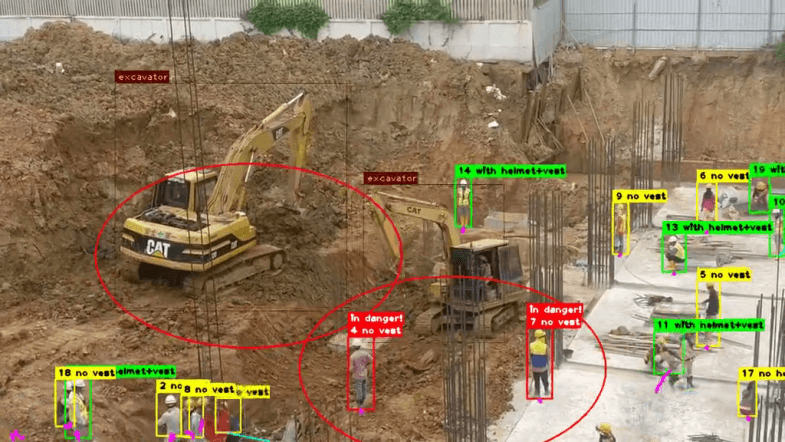
The AI-powered vison-based monitoring system developed by AutoSafe can help reduce accidents on construction sites.
Multilegged soft robot for diagnosis, drug delivery
While our researchers think big, some of their inventions are literally small. At the Miniature Intelligent Robotic System (MIRS) Lab, a team led by Prof. SHEN Yajing has designed and built a tiny millipede-like robot that can climb around in the stomach to aid diagnosis and deliver drugs.
Making millirobots that can achieve superior performances in both wet and dry conditions has been a challenge for scientists. Inspired by the flexible, soft, and elastic leg structures of many living organisms, Prof. SHEN and his team have developed an untethered soft millirobot with multiple tapered soft feet architecture that can adapt to harsh environments, move fast, and carry heavy loads.
The multi-legged robot has important applications in biomedical engineering, especially for the diagnosis of gastrointestinal (GI) tract related diseases. For instance, it can be used to measure the mechanical property of the substrate, which may help diagnose the lesion region.
The robot can also act as a highly precise drug carrier. Benefiting from its superior locomotion ability, it can go across the stomach and reach the desired location in GI tract. The tiny legs can then penetrate the surface of the GI tract to deliver drugs under the control of the magnetic field. Such an ability is very helpful for macromolecule drug (e.g., insulin) delivery, which may offer a new non-invasive treatment option.
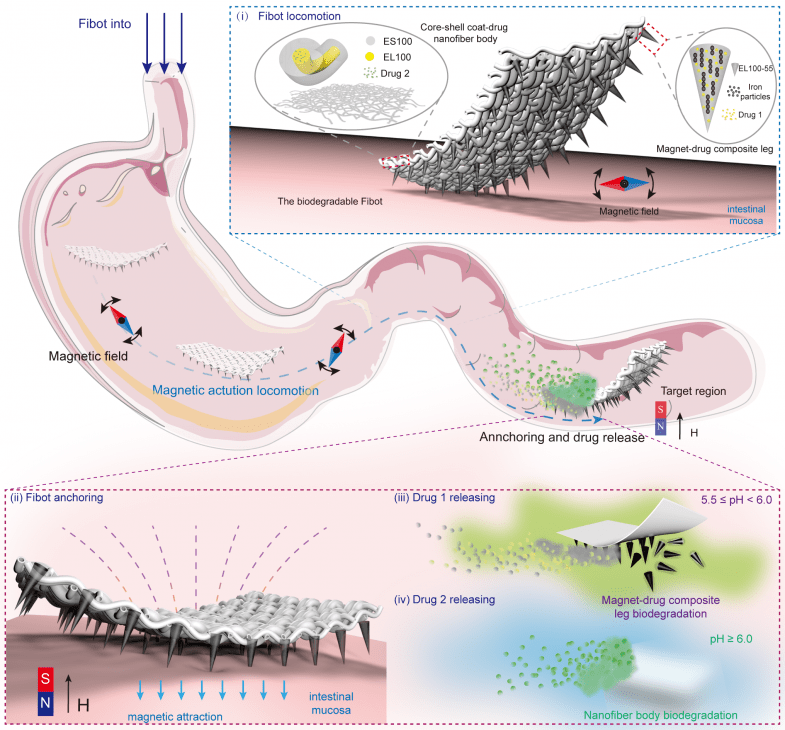
The multilegged robot can go across the stomach and deliver drugs to precise locations in the GI tract.


